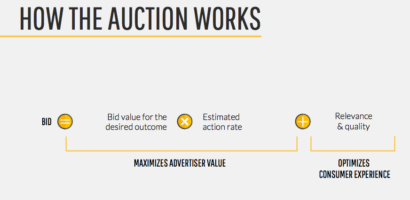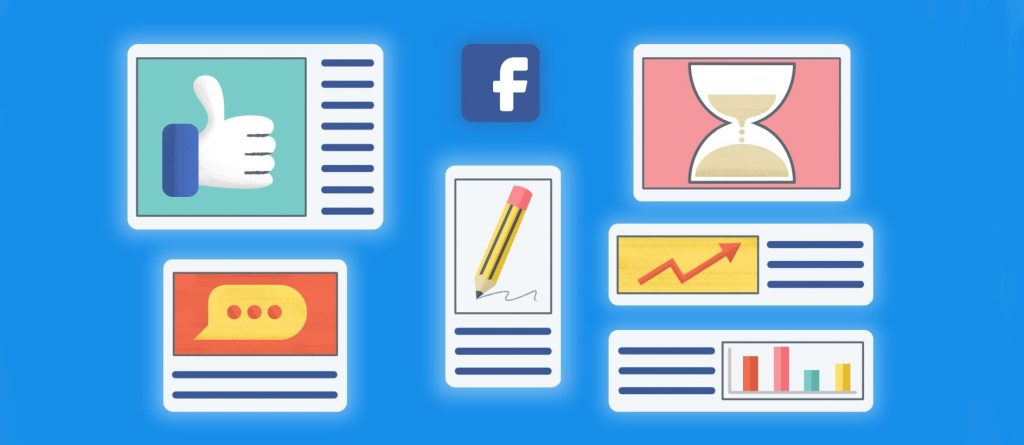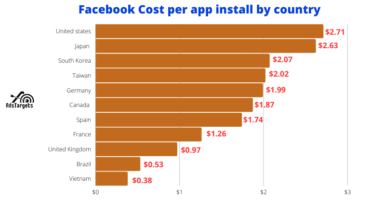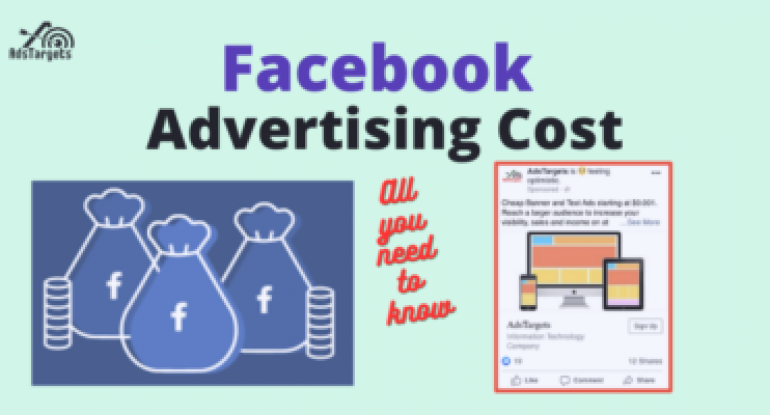If you want to start promoting your business through Facebook or if you’re already managing your Business Page to advertise your company in the hope of finding and acquiring new customers, you’ve probably asked yourself these questions:
- “What are the Facebook advertising costs?”
- “How much should I spend on an ad campaign?”
- “What are the hidden costs of Facebook promotion?”
It’s time to shed some light on these issues, and Adstargets is here to dispel your doubts.
Too often you don’t even know what is the really effective strategy to exploit this Social Network in order to promote your company and get good results for the Business (contacts of potential customers and sales).
Another thing absent is the awareness of how much it costs to promote yourself on Facebook effectively exploiting also the advertisements “Facebook Ads” and therefore how much you have to invest if you want to get something concrete.
Costs are not only in money, and there are not only advertising campaigns!
What does it mean?
It means that promoting your company in the context of Facebook doesn’t give results ONLY thanks to the advertisements (especially if they are exclusively for sale…) but also thanks to the management of your company.
Facebook Page and the care of the community of potential customers (the fans) that you have gathered around it.
Not to mention the marketing strategy that should go beyond Facebook.
It also means that the only exchange currency to acquire new customers is not only the money to pay for the advertisements, but also the money to pay professionals (if you decide to use it and if you have the economic possibilities), the money to pay for training (courses, consulting, etc. …) and if you decide instead of giving yourself to DIY, know that what you will spend will be a lot of time and energy.
After these premises, we can start!
Table of Contents
ToggleHow the Facebook advertising system works
Let’s have a quick overview of Facebook Ads as far as costs are concerned.
The first thing to remember is:
Facebook Ads are based on auction
Have you ever seen auctions on some TV shows? An asset is offered, there are people interested in having it, they bid on the price and whoever offers the most wins the auction and achieves its goal.
But what is auctioned on Facebook? A simple space in a person’s News Section (in their Personal Profile).
Advertisers, i.e. those who advertise using Facebook Ads like you, will create advertising campaigns by setting a budget and a maximum bid and in this way will set their bet at the auction.
In broad terms, whoever bets the most can win the auction and show their ad to that person.
As a result, there is no fixed price, but it is decided on the basis of several factors related to supply and demand.
The more advertisers (other companies that advertise on Facebook) the fewer potential users to reach and the more costs will rise (and vice versa).

But what is the reason behind this system?
If Facebook would continuously bombards users with advertisements it is likely that users would end up using the social network less frequently and this would not be satisfactory for anyone.
So Facebook limits the number of advertisements seen by each individual user.
In other words, there is limited advertising space and there are many people who want to use it to promote their business.
Advertisers are in fact competing against each other to get their advertisements displayed.
In other words, those who offer the highest value get the display of their Facebook ads.
The 4 Factors that influence costs
Now you know that if you are lucky and operate in an industry with little competition (in terms of investment in Facebook Ads), your costs can be very low if facebook ad management pricing is implemented well.
But if you’re in a competitive industry, you still have the chance to spend less and outperform other advertisers because it’s not just the budget and the maximum offer that affects the result (i.e. your final cost).
Here are the 4 main factors that contribute to determining how much an advertising campaign on Facebook costs:
- the OFFER, i.e. how many users are in the target group.
- the DEMAND, i.e. how many advertisers want to show advertising to that target group
- the QUANTITY of money invested in the advertisements
- the QUALITY of the advertisements

Offer and demand obviously vary depending on the target audience used, i.e. the audience you select as the recipient of your advertisements.
It should be added that the ” Demand ” is also influenced by the amount of money (the third point) that these advertisers decide to spend.
Even if there are few competing advertisers, when they decide to spend a lot of money, prices will still go up.
These three elements together also determine a phenomenon of seasonality that leads some businesses to have higher costs at certain times of the year because in that period of time demand and the amount of money invested intensify.
The last important aspect, however, is what together with the target can make a difference and lower your costs by improving results, i.e. quality.
In fact, it is important to know that Facebook in its auctions may prefer ads that generate more interactions than others that get less even if they have higher budgets and higher bids!
So we’re talking about quality ads that can capture users’ attention effectively.
That’s why the two fundamental aspects for the success of your ads are the correct selection of the target (of potential clients) and the creation of advertising posts that have effective text and images.
How much does it cost to advertise on Facebook?
Facebook ads are a battlefield for businesses and today ads are within the reach of any entrepreneur to attract customers and grow business.
In fact, there are more than 1.6 billion people worldwide following small and medium-sized businesses on Facebook pages.
But at the end of the day, how much do Facebook ads cost?
Well, that’s a delicate question: there are so many variables at stake.
Depending on your situation, the cost of your Facebook ads could reach $10 per click or up to 70 cents.
So you’re probably wondering, “How can I get an idea of the cost of Facebook ads before I start using them?
A look at existing studies reveals that the cost of a Facebook ad for most industries is between $0.50 and $2.00 per click.
To get a better idea of how much does it cost to put an ad on Facebook?, let’s take a closer look at two of the most detailed studies available, those of WordStream and AdEspresso.
According to WordStream, the average cost per click for Facebook ads in all areas is $1.72.
However, this average is altered by some anomalies.
For example, the financial and insurance industries have the highest average Facebook advertising cost at $3.77 per click.
Fortunately, not all industries have such a high average.
The clothing ($0.45 per click), travel and hospitality ($0.63) and retail ($0.70) industries have the cheapest Facebook advertising cost.

According to AdEspresso, the average cost per click for all countries is $ 0.97.
Facebook retargeting ads cost
It’s cheaper to retarget ads on Facebook and increase your ROI or ROAS. The reason is simple, your ads already have enough data based on how your audience interacted with your ads.
This means Facebook is not trying to understand who to show your ads cause you have already provided them with the data to use.
This also makes your ads more relevant which leads to more leads or conversions.
So if your first campaign cost about $2.55 per click, you should expect your retarget ads to be 50% cheaper ($1.27) per click. Again this is not fixed and it varies depending on several factors.
Average cost per click (CPC) by country
The graph below shows the cost per click for each country in U.S. dollars, with the United States having an average cost for advertising on Facebook of $ 1.10 per click.

Remember that these averages should be taken with a minimum of caution because they vary according to different subjective factors.
Facebook Cost per app install by country
Here you can find the average Facebook App install cost by the top 10 countries based on adespresso pricing. Though this varies from year to year as well as other Facebook ad costs factors, these are the average cost you should expect.

Cheapest Facebook ads countries
There are several reasons why Ads are more expensive in other countries compared to others, Factors such as income levels in a given location, conversion rate, and audience quality are taken into account.
Though there is non officially published list of cheapest Facebook Ads countries, here are some countries to target if you are looking for cheap Facebook ads country.
- Trinidad and Tobago
- India
- Pakistan
- Philippines
- Bangladesh
- Eygpt
- Thailand
- South Africa
- Poland
- Turkey
- Brazil
- Kenya
- Cameroon
- Romania
- Malaysia
- Zimbabwe
- Ghana
- Sierra Leone
- Mexico
- Tanzania
- Algeria
- Uganda
8 strategies to reduce the cost of Facebook ads
Now that we’ve looked at the key factors involved, let’s see how we can reduce Facebook’s advertising costs.
While there are many factors beyond your control, these eight strategies will certainly help you achieve a higher return on investment (ROI).
1) A/B Test
The A/B test is the process of running the same advertising campaign twice with a small modification to test its performance.
In the following example, you can see two ads published with the same text, but with different images.
This means that you are testing two types of ads to see which image gives the best result.

The A/B test helps you to continuously improve your ads in order to get better performance. This reduces Facebook’s advertising costs and improves your return on investment.
In addition, Facebook Ads Manager makes it easy to perform an A/B test: in the “Traffic” section, simply use the “Create A/B test” button.
This way Facebook will divide your budget equally between the two ads and allow you to measure their performance.
In principle, you will want to test each part of your ad individually. However, start by testing your image and text.
2) Focus on one goal at a time
When you create a Facebook ad the first thing to do is choose a target.
Whatever your choice, make sure your entire advertising campaign is in line with your goal.
Trying to combine two goals in one ad won’t give you better results. In fact, it will almost certainly increase the cost of your Facebook Ads.
Why is that? Each target has a different function and requires different marketing messages, recipients, text, and images.
When you focus on one target at a time, you can make sure that the image, text, audience, and call for action reach your target and get what is called a “conversion” in web marketing jargon.
3) Maintain a high relevance score
The relevance score reveals how successful your ad is with your target audience.
A high relevance score indicates that your ad is receiving positive feedback and good levels of engagement, clicks and conversions.
As a result, high-score ads will reduce the cost of Facebook ads.
The key here is simply to create quality ads that are relevant to your target audience.
4) Keep an eye on the frequency
How to limit the frequency in Facebook ads?
Facebook records a “Frequency” for each ad. This metric indicates how often the same user has viewed your ad.
If the same people display your ad several times, one of two things is happening:
- You’re not reaching new people
- The people you’re reaching keep seeing your ads but they’re not converting.
The higher the frequency, the less involvement, clicks, and conversions you will get. As a result, Facebook’s advertising costs will increase.
It is true that some people will have to see your ads a few times before they click and convert.
However, interested buyers usually only need to see it once or twice.
So aim to keep the frequency of your ads to three or less.
If your frequency score gets too high, stop, edit or finish the campaign.
5) Keep your ads up to date
Remember to update your ads and create new ads on a regular basis.
In addition to helping you maintain low-frequency scores, this technique is optimal for the effective management of Facebook ads.
In fact, no matter how good your advertising campaign is, its impact is likely to diminish over time.
But that doesn’t mean you have to start over every time!
You can keep the same audience and change your offer, image and text.
Also, practice what you’ve learned from the A/B tests and apply it to your new advertising campaigns.
As an example, let’s take a look at what Quad Lock, a company specializing in mobile phone support for sports activities, does.
In the advertisements below, use the same text and invitation to action but with different graphics.

6) Select a specific audience for each campaign
Each campaign should have a personalized target audience. In other words, you should not include your entire target audience in every campaign you run.
This would increase Facebook’s advertising costs.
Why? users will be at different stages of the purchase process and will therefore require different advertising messages.
Segmenting your target audience into sections and subsections will allow you to create highly targeted messages, offers and invitations to action.
The result? Better ad performance and reduced Facebook ad cost.
7) Use retargeting and remarketing campaigns
Retargeting and remarketing are strategies that allow you to advertise people who have already been somehow “exposed” to your business.
Retargeting is the process of displaying ads to potential customers based on browser cookies (using Facebook pixels).
Remarketing is the process of posting ads to potential customers based on email interactions.
In other words, you can use people who have already visited your website or registered on your mailing list as target audiences for your Facebook ads.
These people are already familiar with your brand and products, and so there is already a basis for establishing a business relationship.
That’s why retargeting generally results in more clicks and conversions and lower Facebook advertising costs.
8) Limit your offer
This is the easiest way to keep Facebook’s advertising costs down.
If you know you don’t want to spend more than $1.00 per ad, you can simply limit your offer and make sure that doesn’t happen.
Of course, this means that you could lose potential opportunities to view your ads.
However, if your marketing plan budget is limited and you need to keep Facebook’s advertising costs under control, setting thresholds on your offer is the way to go.
Conclusions
We have come to the end of this article on Facebook advertising costs, and we have discovered together the main features of this system.
As you have noticed, there are several factors to consider when trying to model the costs according to your needs.
We suggest you take a look at the table on average costs that can be incurred, and start your advertising campaign by following our advice!
We hope this article has been useful to you. You are always welcome to visit us at any time!
See you soon!








